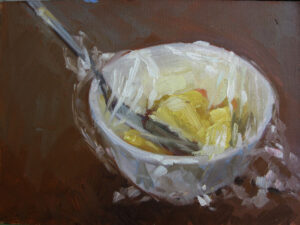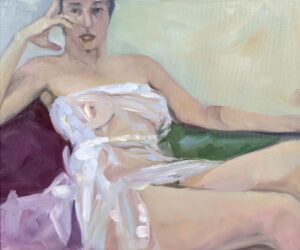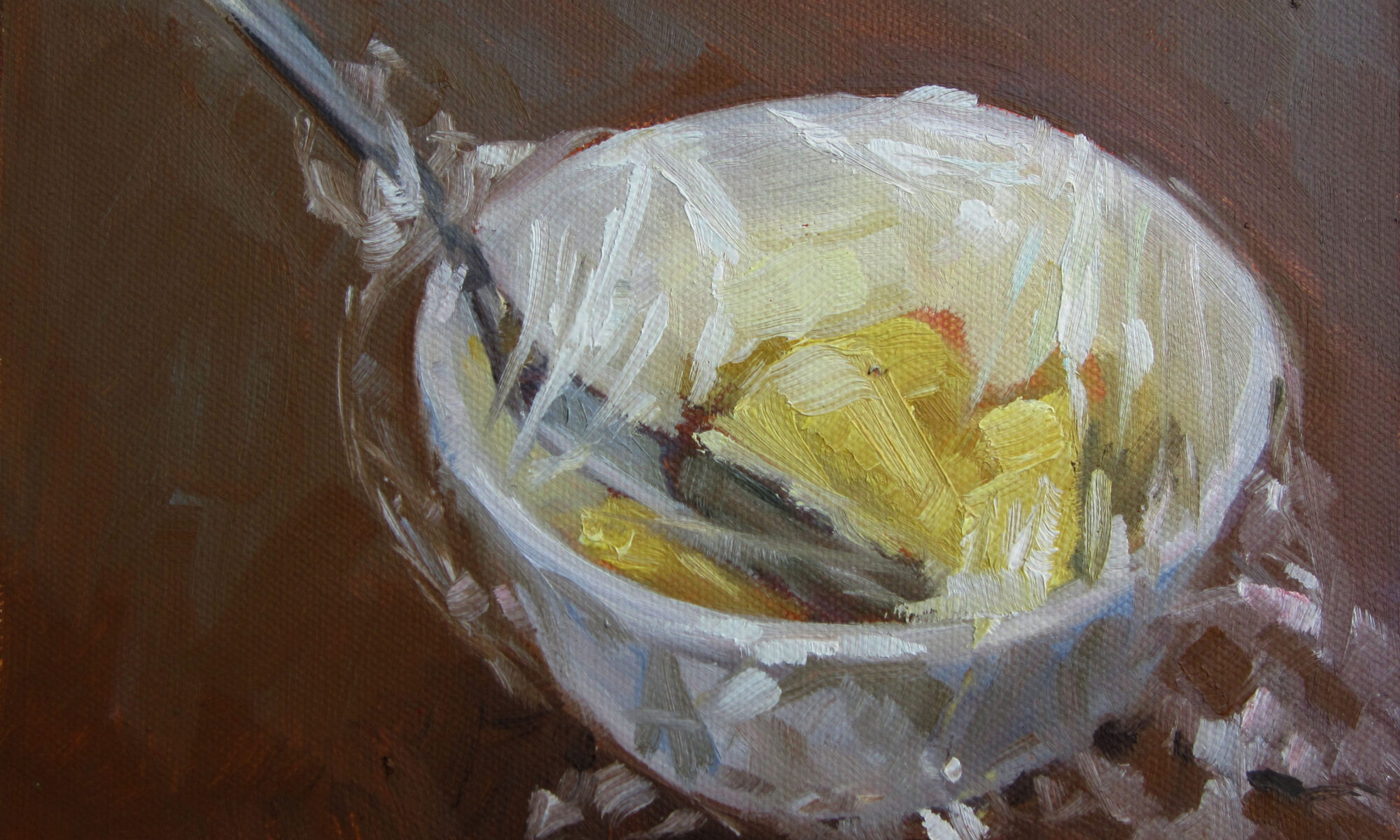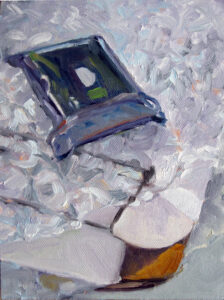
In 2018, I wrote, “Does anyone ever tell Christian Louboutin that $995 is a bit much for a pair of platform suede pumps? No; they either understand Louboutin’s market or they don’t buy designer shoes.” I was stunned to learn that you can still buy a pair of Christian Louboutin suede pumps for $995. Meanwhile the price of a loaf of white bread has risen 33.69% during the same period.
Luxury goods-which paintings very much are-do not follow the general rules of retail pricing. Since people don’t need them, they can be as fickle and subjective as they want in their purchasing.
A proper price is the intersection of how much you can produce of the product and how much demand there is for it. If you can’t keep your paintings stocked, you’re charging too little. If your studio is jammed with unsold work, you’re either charging too much or not putting enough effort into marketing. Your job is to find that sweet spot. (But bear in mind that we all paint a lot of duds between the good ones, and periodically weed them out accordingly.)
A friend prices his work slightly lower than his peers, because he wants it to look like a good deal in comparison. It helps that we both know exactly who our peers are. (Of course, women’s art generally sells at a discount to men’s, despite the fact that in a blind test, consumers can’t tell the difference.)
Most artists are terrible judges of their own work, seesawing between believing they’re geniuses and thinking they’re hopeless. That hinders our ability to subjectively price our work. Don’t assume that because you labored for a long time over a piece, it is more valuable. Your challenges are not the buyers’ problem.
Set aside your emotions and base your selling price on the size of the piece and your selling history. How do you do that if you’ve never sold anything before? Survey other artists with the same level of experience and set your first prices in line with theirs. Visit galleries, plein air events and art fairs. Before you decide an artist is your peer, find his resume online and check his experience. Painting in a national show is not the same as painting your local, unjuried Paint the Town.
The artist’s prominence is the single biggest factor in a painting’s value.
Charity auctions are a good way to leverage your talent to help others. They also provide a sales history to new artists. Let’s say you donated an 8X10 watercolor and it sold at auction for $100. Great! You have a sales history (albeit a limited and imperfect one) from which to calculate prices. Just figure out the value per square inch and calculate from there.
Square inch is the height times the width. That means your 8X10 painting is 80 square inches. Dividing the $100 selling price by 80 gives you a value of $1.25/square inch.
To use this to calculate other sizes, you would end up with: 6X8 is 48 square inches.
48 X $1.25 = $60
9X12: $135
11X14: $240
12X16: $315
In practice, my price/sq. inch gets lower the larger I go. This reflects my working and marketing costs.

When I first moved to Maine, one of my gallerists was also my good friend. She took a red pencil to my price list and brought it up to Maine standards. But don’t expect gallerists to do this for you; they expect artists to set their own prices.
It’s much easier to raise prices than lower them, so start low and work your way up. Another wise birdie once told me that I should adjust my prices annually, so that’s what I do. Our goal ought to be to sell at constantly rising prices. When you find yourself painting on a treadmill to have enough work for your next show, it’s time to charge more. Each time you show, your work will be better known, and over time your prices will rise.
And, by the way, I would never spend $995 on a pair of shoes.
On Friday, I released Step 5, the Foundation Layer, of my Seven Protocols for Successful Painters. This is the heart of painting, where the first layer of color is applied. It’s the next best thing to studying with me live.
Reserve your spot now for a workshop in 2025:
- Advanced Plein Air Painting, Rockport, ME, July 7-11, 2025.
- Sea and Sky at Acadia National Park, August 3-8, 2025.
- Find Your Authentic Voice in Plein Air, Berkshires, MA, August 11-15, 2025.
- Immersive In-Person Fall Workshop, Rockport, ME, October 6-10, 2025.




great article as usual!
This is great. Vet helpful and validates my method of pricing per square inch.
Thanks for the mention too in your post about going pro.!
Thank you for your articles. They are very helpful to me. May I ask you a question?
Sure, as long as it’s not about my hairstyle.